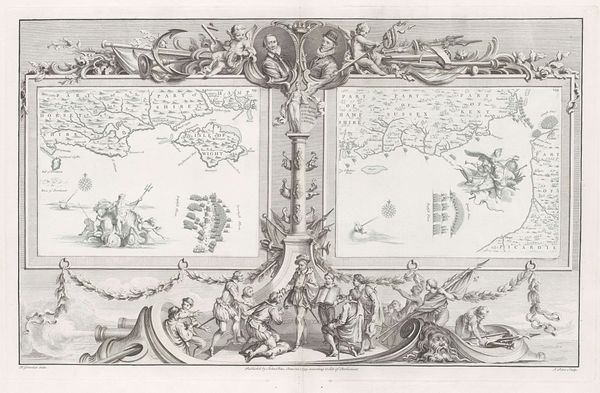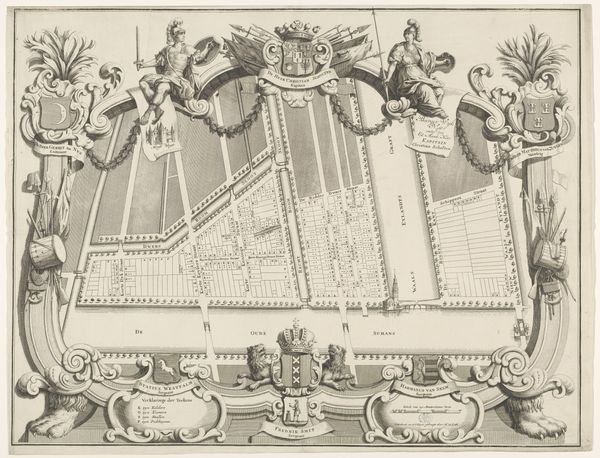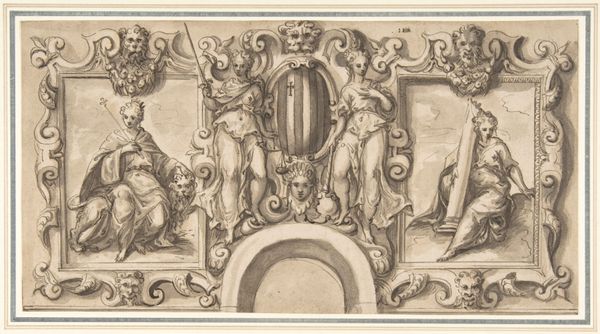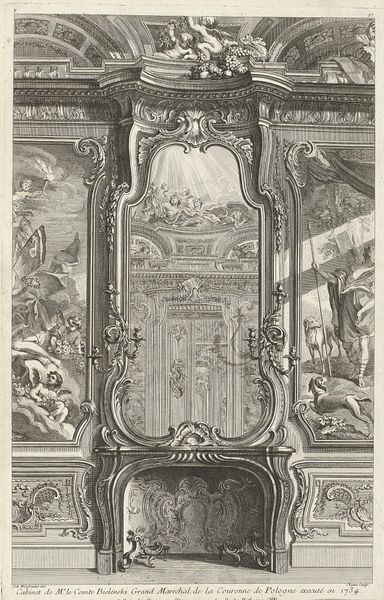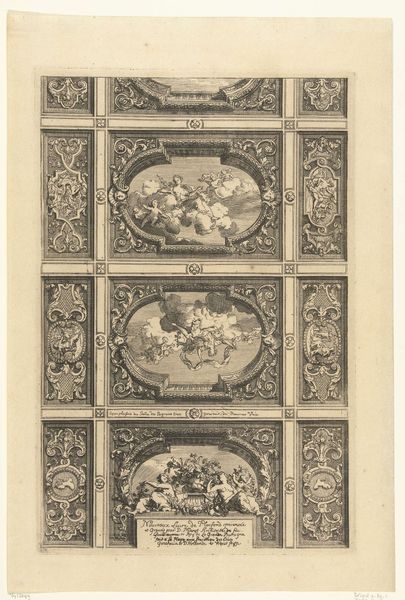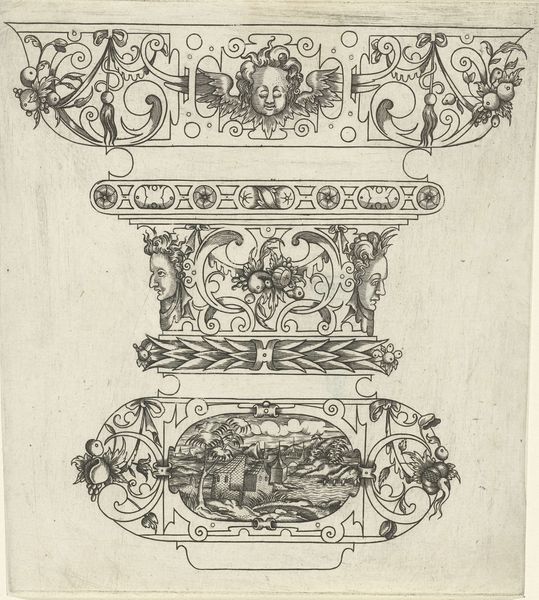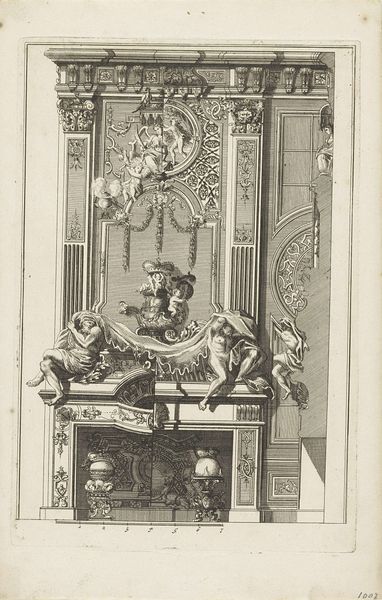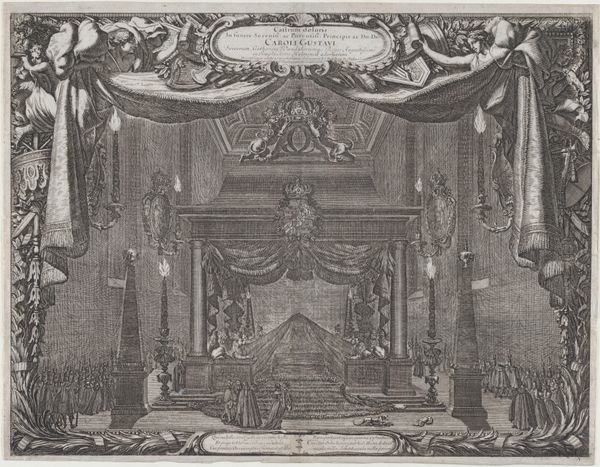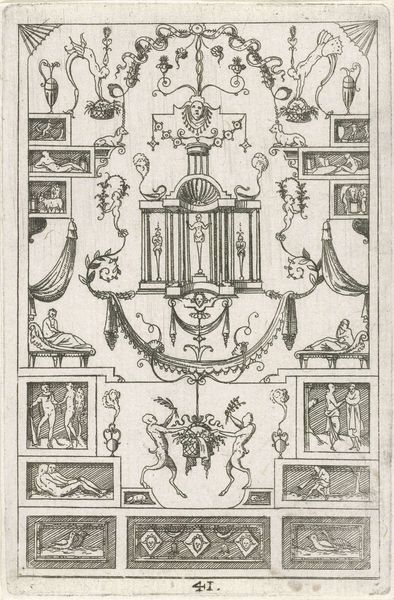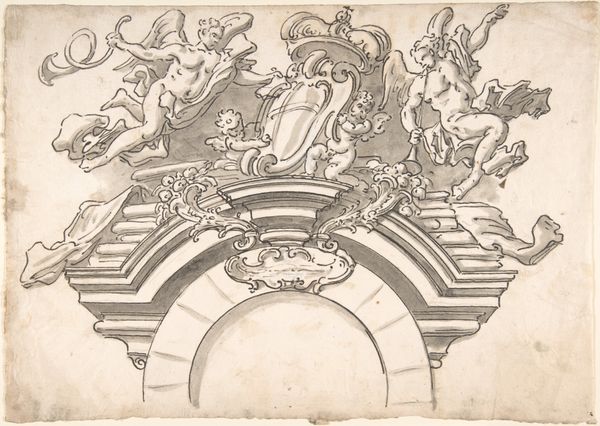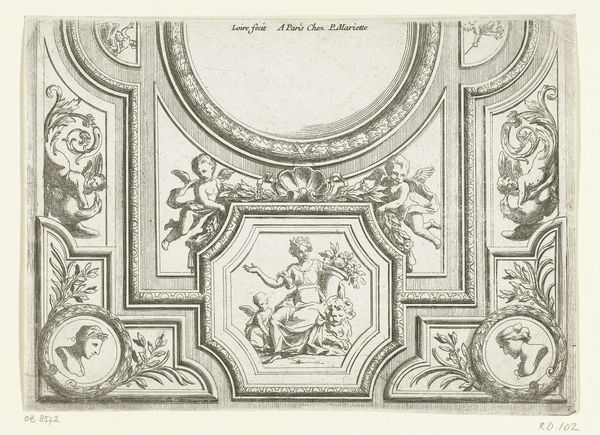
drawing, ink, engraving
#
drawing
#
baroque
#
pen drawing
#
pen illustration
#
pen sketch
#
figuration
#
ink line art
#
ink
#
line
#
decorative-art
#
engraving
Dimensions: height 196 mm, width 258 mm
Copyright: Rijks Museum: Open Domain
Editor: This is *Zijkant van koets*—Side of a Carriage—a pen and ink drawing by Moritz Bodenehr dating from 1675 to 1748. The detail is incredible, but it feels so… distant. How do you interpret this work? Curator: Well, firstly I see a celebration of power and status, filtered through a very particular lens. The Baroque style, with its ornate embellishments, often served as visual propaganda for the elite. What social hierarchies do you think this carriage design reflects? Editor: I guess the really obvious one is class. Like, only the wealthy could afford something this elaborate. Curator: Exactly! Consider the figures depicted—cherubs, classical goddesses. They’re not just decorative; they’re invoking a specific lineage, a connection to idealized notions of beauty, virtue, and divinely sanctioned rule. Does that resonate with any contemporary parallels you can think of? Editor: Maybe how corporations now use 'ethical' branding, when they might actually be exploitative? Curator: That's a very insightful comparison! It reveals the tension between surface appearance and underlying reality. We need to unpack how this display of luxury functioned within a society marked by vast inequality. Who was this message really for? Editor: Probably other rich people, right? A kind of peacocking, showing off your wealth? Curator: Yes, but also perhaps as a constant reinforcement, or almost incantation, to cement their positions of dominance. The design isn't just pretty; it's deeply ideological. By understanding its context, we start to grasp the power dynamics at play. Editor: It’s interesting how something seemingly just "decorative" can have so much more going on beneath the surface. It gives you a fresh look at art history. Curator: Precisely! It shows that even designs for carriages can serve as potent vehicles for understanding complex social narratives.
Comments
No comments
Be the first to comment and join the conversation on the ultimate creative platform.
